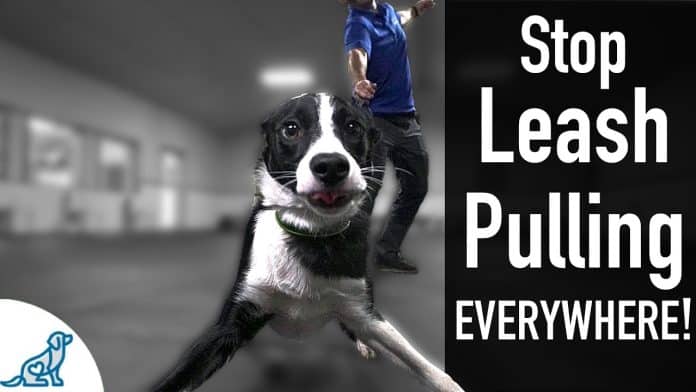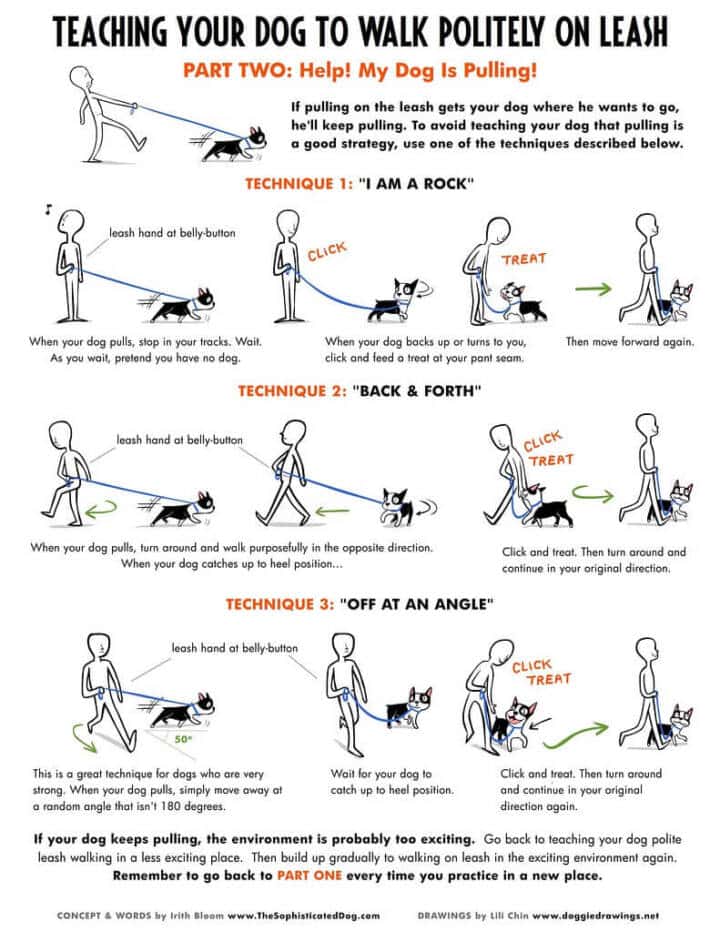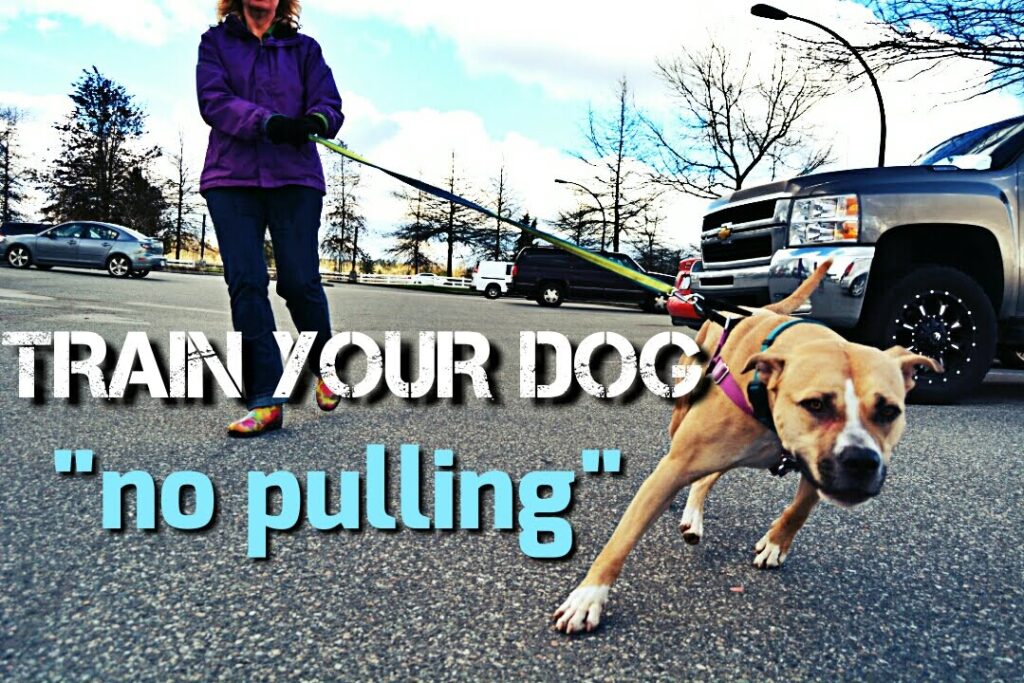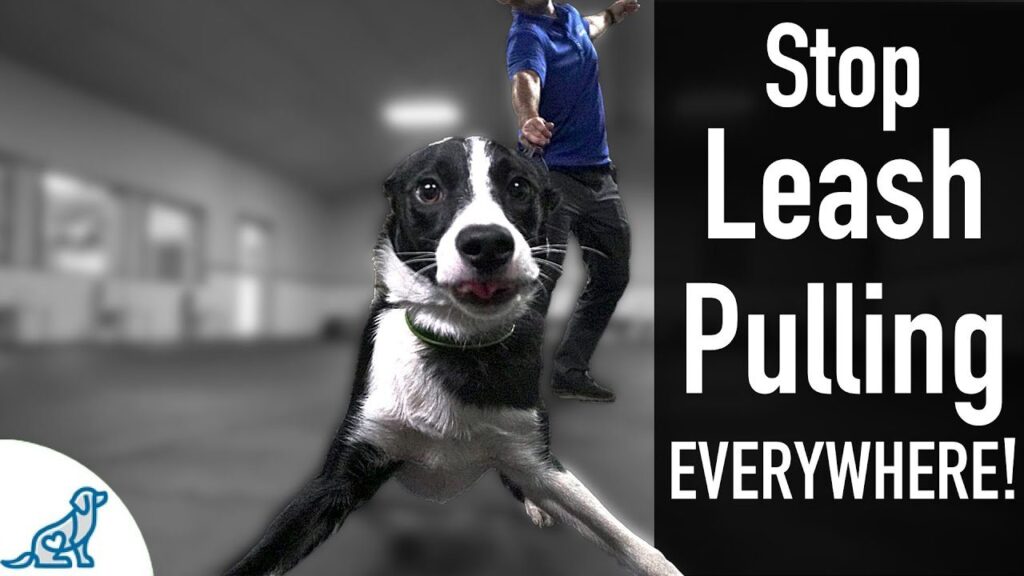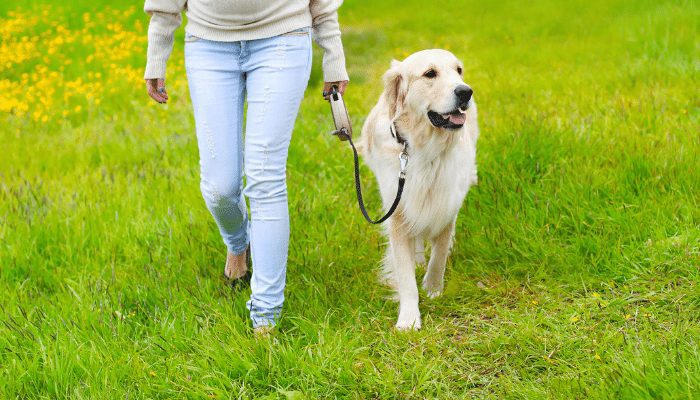Are you tired of feeling like you’re in a tug-of-war whenever you take your dog for a walk? You’re in the right place if you’ve ever wondered how to train your furry friend to stop pulling on the leash.
We all want our dogs to walk politely beside us without constantly pulling us in different directions. In this article, we’ll explore some simple yet effective techniques that can help you teach your dog to walk on a leash without pulling.
So, say goodbye to those frustrating walks and hello to a more enjoyable and relaxed walking experience with your four-legged companion.
Understanding the Problem
Identifying the Issue
You’re not alone if you’ve found yourself struggling with a dog that pulls on the leash during walks. It can be frustrating and can often lead to a less enjoyable experience for both you and your furry friend.
The first step in addressing this problem is to identify the root cause of the behavior. Is your dog overly excited? Anxious? Or simply not aware of proper leash etiquette? Understanding the underlying issue will guide you in finding the most effective training techniques.
Recognizing the Consequences
Allowing your dog to consistently pull on the leasheral negative consequences. Firstly, it can strain your dog’s neck and potentially lead to injuries. It can also make it difficult for you to maintain control and can even become a safety hazard when walking near busy roads or in crowded areas.
Additionally, a dog that pulls on the leash may be labeled as untrained or unruly, leading to restrictions in public places or negative opinions from others. Addressing this behavior can ensure a safer and more enjoyable walking experience for you and your furry companion.
Choosing the Right Equipment
Collars vs. Harnesses
Choosing the right equipment is crucial when training your dog not to pull on the leash. While traditional collars may be suitable for some dogs, using a harness can often be more effective in preventing pulling behavior.
Harnesses distribute pressure more evenly across your dog’s body, reducing the strain on their neck and making it more comfortable for them to walk beside you. Additionally, certain harness styles, such as front-clip or no-pull harnesses, provide better control and discourage pulling by redirecting your dog’s attention.
Selecting the Right Leash
In addition to choosing the suitable collar or harness, selecting the right leash can also contribute to successful training. A standard leash that is around 4 to 6 feet long is generally recommended to provide adequate control while still giving your dog some freedom to explore.
Avoid using retractable leashes during training, as they can reinforce pulling behavior and make it challenging to maintain consistency. Opt for a sturdy and comfortable leash that suits your needs and allows you to guide your dog during walks effectively.
Building Basic Leash Skills
Establishing a Connection
Establishing a strong connection with your dog is the key to successful leash training. Spend quality time bonding with your furry friend and engaging in activities that promote trust and obedience. Regularly practicing basic commands, such as sit, stay, and come, will help establish a foundation of communication between you and your dog. Building a solid relationship and ensuring your dog understands and respects your commands will make leash training more accessible and practical.
Teaching the Proper Position
Teaching your dog the proper walking position is essential to prevent pulling on the leash. Start by rewarding your dog for walking beside you with a treat or verbal praise. Use a command, such as “heel” or “walk nicely,” to signal your dog to stay close to your side. Gradually decrease the frequency of treats as your dog becomes more comfortable walking beside you. Consistency is vital, so be patient and persistent in reinforcing the proper position during each walk.
Utilizing Positive Reinforcement
Rewarding Good Behavior
Positive reinforcement is a powerful tool in dog training and can be especially effective when teaching leash manners. Whenever your dog exhibits good behavior, such as walking calmly beside you without pulling, reward them with treats, praise, or a combination of both.
This positive association will motivate your dog to continue behaving appropriately during walks. Remember to provide rewards immediately after the desired behavior occurs to reinforce the connection between the action and the reward.
Using Clicker Training
Another technique that can complement positive reinforcement is clicker training. Clicker training involves using a small clicking device to mark the moment your dog exhibits the desired behavior.
Pair each click with a treat or praise to reinforce the positive association. You can effectively communicate your expectations and encourage good leash manners by consistently using the clicker and rewarding your dog when it walks without pulling.
Teaching Loose Leash Walking
Step-by-step Training Process
Teaching your dog to walk on a loose leash requires patience and consistency. Start by walking in a low-distraction environment, such as your backyard, and use treats or toys to capture your dog’s attention. Hold the leash loosely and encourage your dog to walk beside you.
Whenever your dog begins to pull, stop walking and wait until they return to your side. Reinforce the proper position with rewards, and gradually increase the walking duration before rewarding. Gradually introduce more challenging environments as your dog becomes more proficient in walking on a loose leash.
Dealing with Distractions
As with any training, distractions can pose a challenge. When encountering distractions during walks, such as other dogs, squirrels, or enticing smells, it’s essential to redirect your dog’s attention and reinforce the proper walking position.
Use treats or a favorite toy to regain focus, encourage them to ignore the distraction, and continue walking calmly beside you. Over time, with consistent training, your dog will learn to maintain good leash manners even in the face of distractions.
Implementing Response Training
Teaching Commands like “Stop” and “Wait”
Teaching your dog specific commands like “stop” and “wait” can further enhance leash training and improve their overall behavior during walks. Begin by teaching these commands in a controlled environment like your home or backyard. Use treats or toys to reinforce the desired behavior of stopping or waiting.
Gradually introduce these commands during walks, particularly when approaching potentially dangerous situations, such as road crossings or approaching unfamiliar dogs. By consistently practicing these commands, you can control your dog’s movements better and ensure their safety.
Practicing in Different Environments
To reinforce proper leash behavior, practicing in various environments is essential. Start in a quiet and familiar area, such as your neighborhood, and gradually progress to more challenging locations, including busier streets, parks, or pet-friendly establishments.
Exposing your dog to different environments helps them generalize good leash manners and adapt to various distractions. Always prioritize safety and gradually increase difficulty as your dog becomes more comfortable and proficient.
Managing Excitement and Energy Levels
Creating a Calm Atmosphere
Managing your dog’s excitement and energy levels plays a significant role in preventing pulling on the leash. Before each walk, create a calm and controlled environment. Avoid getting your dog excited by keeping interactions low-key and minimizing excitement-inducing activities. Establishing this calm atmosphere will set the tone for a more controlled and focused walk, reducing the likelihood of your dog pulling on the leash.
Engaging in Pre-Walk Activities
Engaging your dog in pre-walk activities can help burn off excess energy and reduce their excitement before hitting the pavement. Consider incorporating mental stimulation exercises, such as puzzle toys or obedience training, to help productively channel your dog’s energy. A tired and mentally stimulated dog is likelier to exhibit calmer behavior during walks, making leash training more manageable and effective.
Addressing Fear and Anxiety
Understanding the Root Cause
If your dog pulls on the leash due to fear or anxiety, it’s essential to address the underlying cause. Fearful or anxious dogs may exhibit avoidance behaviors or attempt to flee, leading to increased pulling on the leash. Identify potential triggers and work on desensitizing your dog to these situations through gradual exposure and positive reinforcement. Addressing the root cause of fear and anxiety will improve leash manners and contribute to your dog’s overall well-being and confidence.
Desensitization Techniques
Desensitization techniques can help address fear and anxiety-related pulling behavior. Start by exposing your dog to low-level triggers in a controlled environment and reward calm and relaxed behavior. Gradually increase the intensity or proximity of the trigger while ensuring your dog remains comfortable and calm.
This slow and systematic approach allows your dog to build positive associations with the trigger and learn to cope with their fears or anxieties. Consulting with a professional dog trainer or behaviorist experienced in desensitization techniques can provide further guidance and support.
Seeking Professional Help
When to Consult a Dog Trainer
In some cases, leash training may prove challenging or require additional expertise. If you feel overwhelmed or your dog’s pulling behavior persists despite your best efforts, it may be beneficial to seek professional help. A certified dog trainer can assess your dog’s behavior, tailor a training plan to address their specific needs, and provide you with the guidance and tools to manage leash pulling effectively. Remember, there’s no shame in asking for help, and investing in professional training can significantly improve your dog’s behavior.
Specialized Training Programs
Depending on the severity of your dog’s pulling behavior or specific training goals, specialized training programs may be worth considering. These programs often involve intensive training sessions led by experienced trainers that address leash pulling and other behavioral issues. Such programs can provide a structured and tailored approach to training, offering additional support and expertise to help you and your dog achieve lasting results.
Consistency and Patience
Establishing a Routine
Consistency is vital when it comes to leash training. Establishing a regular and structured routine is essential for instilling good leash manners in your dog. Set aside specific times for walks and dedicate enough time to training and reinforcing desired behaviors.
Consistency also extends to using the same training techniques, commands, and rewards throughout the training process. By adhering to a routine and maintaining consistency, you’ll create clear expectations for your dog and help them understand what is required during walks.
Avoiding Reinforcing Bad Behavior
While it can be tempting to allow your dog to pull or give in to their demands during walks, doing so will only reinforce the undesirable behavior.
Avoid yanking on the leash or allowing your dog to move forward when they pull, as this sends mixed signals and can confuse your dog. Instead, be patient and persistent in reinforcing the proper walking position and rewarding good behavior.
Consistency in your response will help your dog understand that pulling on the leash does not lead to the desired outcome, encouraging them to adopt better leash manners.
With patience, consistency, and a positive approach, you can train your dog not to pull on the leash. By understanding the issue, choosing the right equipment, building basic leash skills, utilizing positive reinforcement, teaching loose leash walking, implementing response training, managing excitement and energy levels, addressing fear and anxiety, seeking professional help when necessary, and maintaining consistency, you’ll create a harmonious walking experience that both you and your furry companion can enjoy. So, put on your leash, grab some treats, and embark on the journey to leash training success!

